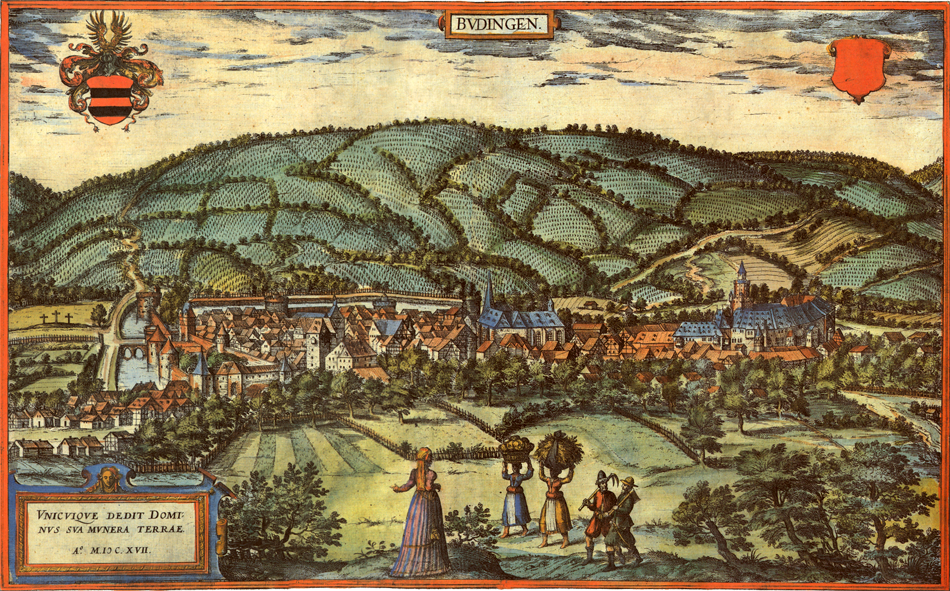Russian representatives published the 1763 Manifesto of Catherine II in newspapers and distributed printed copies throughout Europe, luring thousands with its promises of a better life in a faraway land.
The recruiters were divided into two categories, those that directly represented the Russian government and groups of private recruiters who were authorized by the Russian government to establish their own colonies along the lower Volga River.
To directly represent the Russian government, Catherine appointed Johann Matthias Simolin, the Russian Ambassador to the Reichstag (the Diet of the Realm or Parliament at this time), to act as special commissioner to head the Russian crown's recruitment effort. Simolin's deputies were Friederich Meixner, whose headquarters were located at Ulm, and Johann Facius from Hanau who was initially headquartered at Frankfurt am Main in October 1765.
The recruitment of colonists often brought strong reaction from the German authorities who often did not want their subjects to emigrate. Many of the German rulers enacted laws threatening severe punishment, confiscation of goods, and the prohibition of property sales for anyone considering emigration. Despite his diplomatic protection, the authorities in Frankfurt forced Facius out of the city and he soon established a new headquarters in the city of Büdingen in late February of 1766.

Facius and his representatives of the Russian crown were much more scrupulous in their recruiting activities than the private recruiters, ensuring that would be colonists had the desired skills and requiring them to present documentation of their release by the local authorities. The Russian government had to be very careful not to upset diplomatic relationships in the German territories that were allowing emigration.
Most of the colonists that arrived in the Saratov area were part of the transport groups led by private recruiters (about 56 percent). Many of these colonists had first migrated as colonists to Denmark.
Among the private recruiters were three cooperative companies. The first company was formed by le Roy, a Frenchman; Pictet, a Swiss from Geneva; and Sonntag, a German. They recruited in Friedberg (near Bad Nauheim) and Bornheim (near Frankfurt). The second was formed by the Frenchman Baron Caneau de Beauregard along with Major Otto Friedrich of Monjou. The third, with no independent funding, was formed by Jean de Boffe, Meusnier et Precourt de Saint-Laurent, and Quentin Benjamin Coulhette d'Hautervive.
Thousands of German craftsmen and farmers responded to these recruitment efforts and founded 106 German villages on both sides of the Volga; they are thus known as the Volga Germans. Le Roy and Pictet established 25 colonies comprising 1,530 families with 5,339 people, along the Volga south of Saratov and to the east on its left tributaries the Karaman and Tarlyk, for example the colony of Lauwe, now Yablonovka, founded as a Lutheran colony on August 19, 1767. LeRoy and Pictet later became managers of their colonies.
Due to mismanagement and corrupt activities by the recruiters, they were removed as directors of their colonies by the Russian government in 1788. The privately established colonies were then placed under the Kontora, which was officially known as the Saratov Office for the Guardianship of Foreign Settlers. From that point forward, the Kontora had oversight of all the Volga German colonies.
Written by Steven Schreiber (March 2020).
Idt, Andreas, and Georg Rauschenbach. Die "Berufer" - Abenteuerer Der Aufklärung in Katharinas II. Kolonisierungsproject. Moscow: 2019.
Keim, Philipp. Die Wolgadeutschen von der Einwanderung bis zur Aufhebung des Kolonistenkontors, dissertation, Norderstedt: GRIN books on demand, 2006, ISBN 9783638709125, p. 28 (in German)
Pleve, I. R., and Richard R. Rye. The German Colonies on the Volga: The Second Half of the Eighteenth Century. Lincoln, Neb.: American Historical Society of Germans from Russia, 2001. Print.